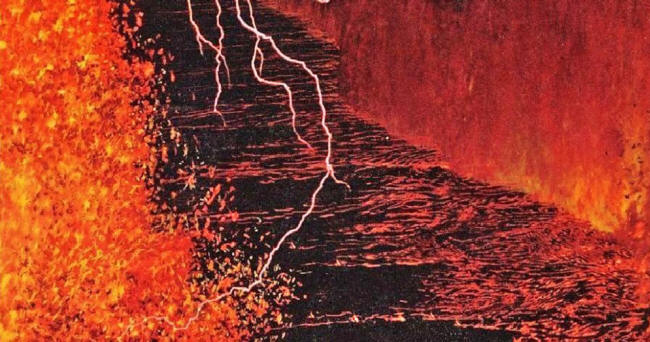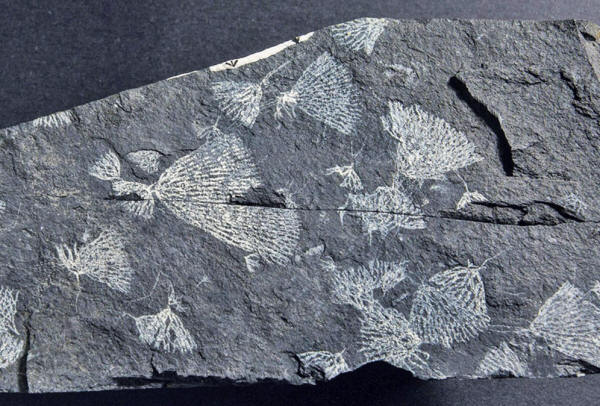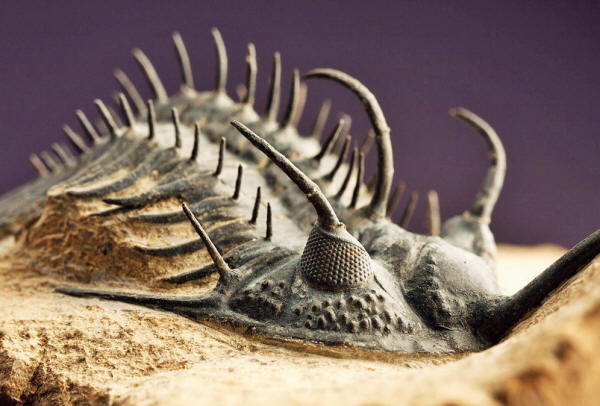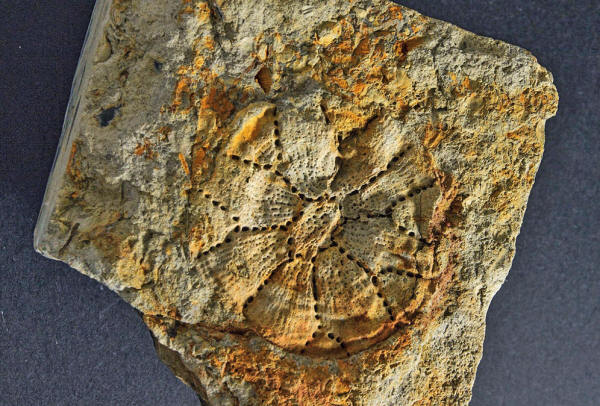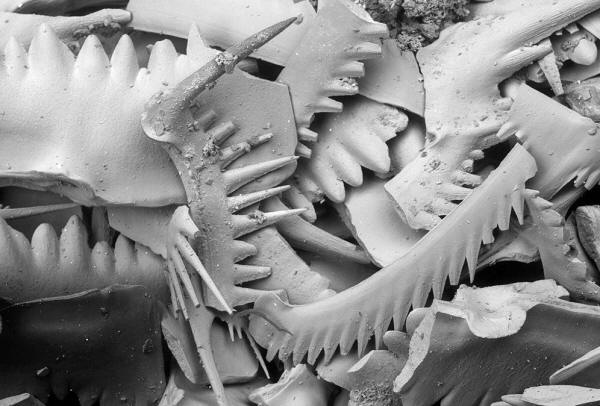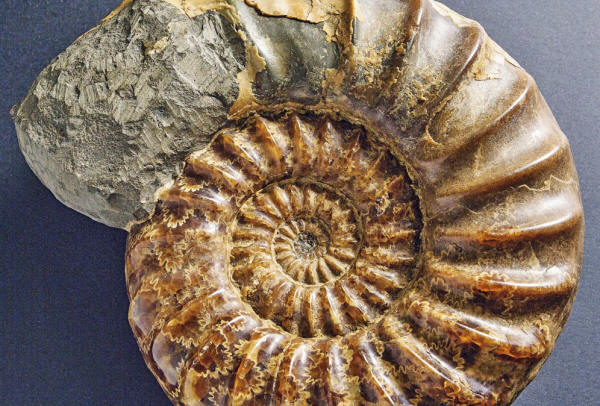|
by Viviane Richter
from
CosmosMagazine Website
Biologists suspect we're living through the sixth major mass extinction. Earth has witnessed five, when more than 75% of species disappeared.
Palaeontologists spot them when species go missing from the global fossil record, including the iconic specimens shown here.
Graptolite 2-3 cm length Credit: JAIME MURCIA
MUSEUM
VICTORIA
They were filter-feeding animals and colony builders. Their demise over about a million years was probably caused by a short, severe ice age that lowered sea levels, possibly triggered by the uplift of the Appalachians.
The newly exposed
silicate rock sucked CO2 out of the atmosphere, chilling
the planet.
Late Devonian - 375 million years ago, 75% of species lost
Smithsonian Institution
Their great success was helped by their spiky armor and multifaceted eyes. They survived the first great extinction but were nearly wiped out in the second.
The likely culprit was the newly evolved land plants that emerged, covering the planet during the Devonian period. Their deep roots stirred up the earth, releasing nutrients into the ocean.
This might have triggered
algal blooms which sucked oxygen out of the water, suffocating
bottom dwellers like the trilobites.
Tabulate coral, 5 CM MELBOURNE MUSEUM
The tabulate corals were lost in this period - today's corals are an entirely different group.
What caused it?
A perfect storm of natural catastrophes.
Rocks after this period
record no coral reefs or coal deposits.
Conodont teeth 1 mm Natural History Museum
But the discovery of an intact fossil in Scotland in the 1980s finally revealed their owner - a jawless eel-like vertebrate named the conodont which boasted this remarkable set of teeth lining its mouth and throat.
They were one of the first structures built from hydroxyapatite, a calcium-rich mineral that remains a key component of our own bones and teeth today.
Of all the great extinctions, the one that ended the Triassic is the most enigmatic.
No clear cause has been
found.
End Cretaceous - 66 million years ago, 76% of all species lost
Ammonite 15 cm length Credit: JAIME MURCIA / MUSEUM VICTORIA
Dinosaurs may have ruled the land during the Cretaceous period but the oceans belonged to the ammonites. But volcanic activity and climate change already placed the ammonites under stress.
The asteroid impact that ended the dinosaurs' reign provided the final blow. Only a few dwindling species of ammonites survived. Today, the ammonites' oldest surviving relative is the nautilus.
Will it survive the sixth great extinction?
Read "Has the Earth's Sixth Mass Extinction already Arrived?"...
|


